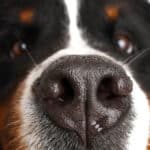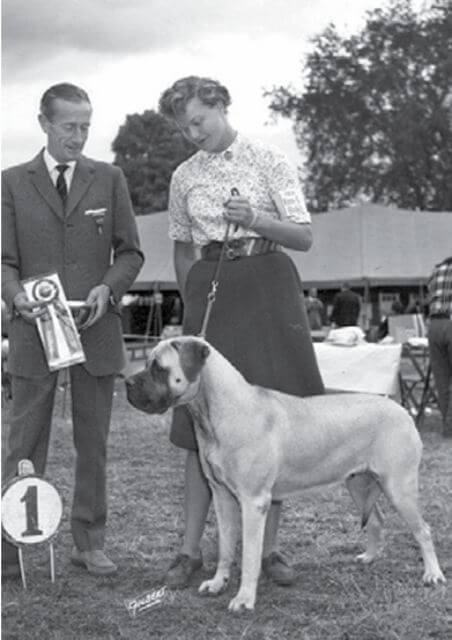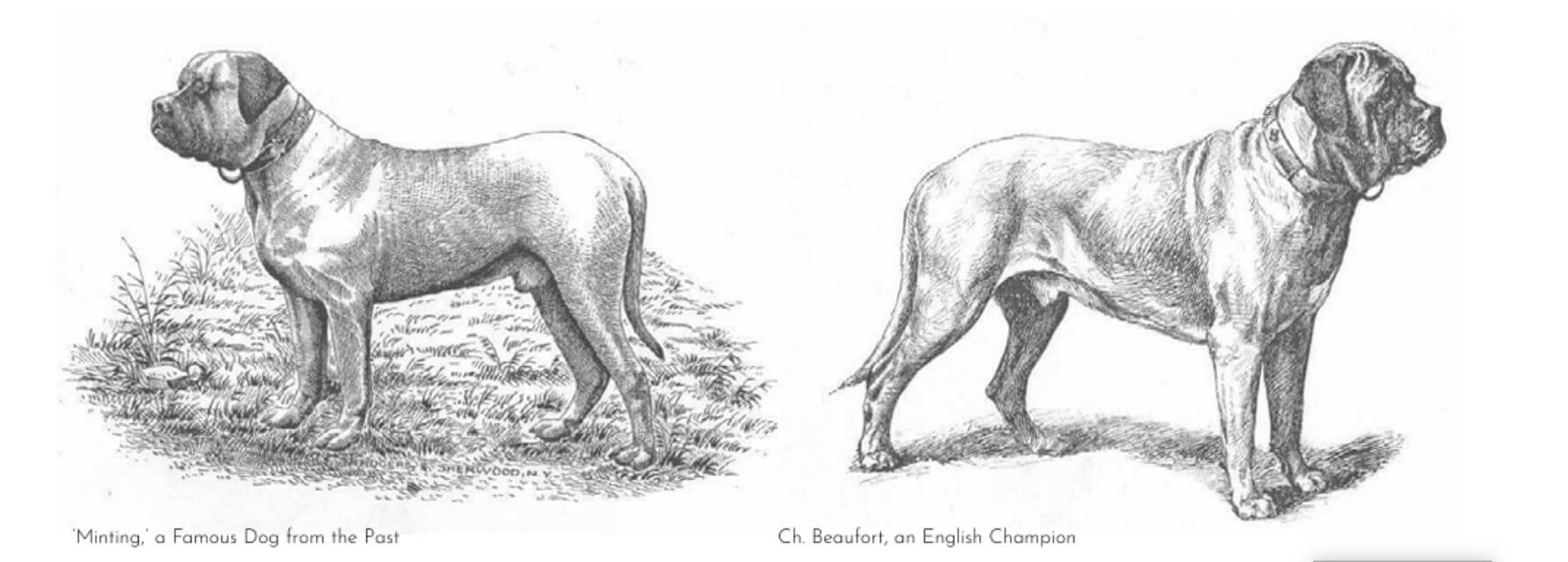
Home » Judging the English Mastiff

This article was originally published in Showsight Magazine, June 2022 issue.
The Mastiff is a large, massive, symmetrical dog with a well-knit frame. The impression is one of grandeur and dignity. Dogs are more massive throughout. Bitches should not be faulted for being somewhat smaller in dimensions while maintaining a proportionally powerful structure. A good evaluation considers positive qualities of type and soundness with equal weight. The height of the dog should come from the depth of body rather than from the length of leg. Proportion is rectangular, the length of the dog from the forechest to the rump is somewhat longer than the height at the withers. As the name Mastiff denotes, the dog should be massive and heavy-boned, with a powerful structure. Great depth and breadth is desirable.

The head in general outline gives a massive appearance when viewed from any angle. Breadth is greatly desired, eyes set wide apart, medium in size, color the darker the better. Ears should be V-shaped, small and in proportion to the head. Skull is broad and somewhat flat between the ears. Forehead is slightly curved, with a furrow up the center of the forehead, showing marked wrinkles which are particularly distinctive when at attention. The brows are superciliary ridges, moderately raised. The proportion of the head is 1:2—one (1) for the muzzle (tip of nose to stop) and two (2) for the skull (stop to occiput). The muzzle is short and broad, with only a slight taper to the end of the nose. Black mask, colored the blacker the better.
Scissors bite is preferred but a moderately undershot jaw should not be faulted providing the teeth are not visible when the mouth is closed. It should be noted that judges should examine the occlusion of the mouth to ensure a wry mouth is not present. The Mastiff is not a ‘head breed,’ it is a ‘working breed.’ Their gait denotes power and strength. The rear legs should have drive, while the forelegs should track smoothly with good reach. In motion, the legs move straight forward as the dog’s speed increases from a walk to a trot, the feet move in toward the center line of the body to maintain balance. When judging temperament, there should be a combination of grandeur, good nature, courage, and docility. Dignity, rather than gaiety, is the Mastiff’s correct demeanor.

Judges may find a Mastiff to be rather aloof, but should not condone shyness or viciousness. Conversely, judges should also be aware of putting a premium on showiness. The Mastiff is not typically a ‘showy breed.’ Please do not penalize a dog for his/her reticent attitude. As long as the dog tolerates an examination, it is an acceptable attitude. There are three colors (fawn/apricot/brindle), all are judged equally with no preference for color.
There are three easy landmarks to look for when judging the Mastiff: (1) a prominent sternum; (2) when in a stack, the elbow should be directly under the withers, denoting the dog has sufficient layback exhibiting a prominent pro-sternum; (3) plum-line dropped from the ischium (farthest most point of the hindquarters) will pass directly in front of the rear foot. Judging the Mastiff should be an enjoyable experience. However, bring your spit towel and be prepared to put up with those of us who love and show our own beautiful dogs without benefit of being shown to their fullest potential. The Mastiff Club of America is always eager to answer your questions. Please visit our website at www.mastiff.org. All information provided has come directly from the Mastiff History and Standard Judge’s Presentations.

